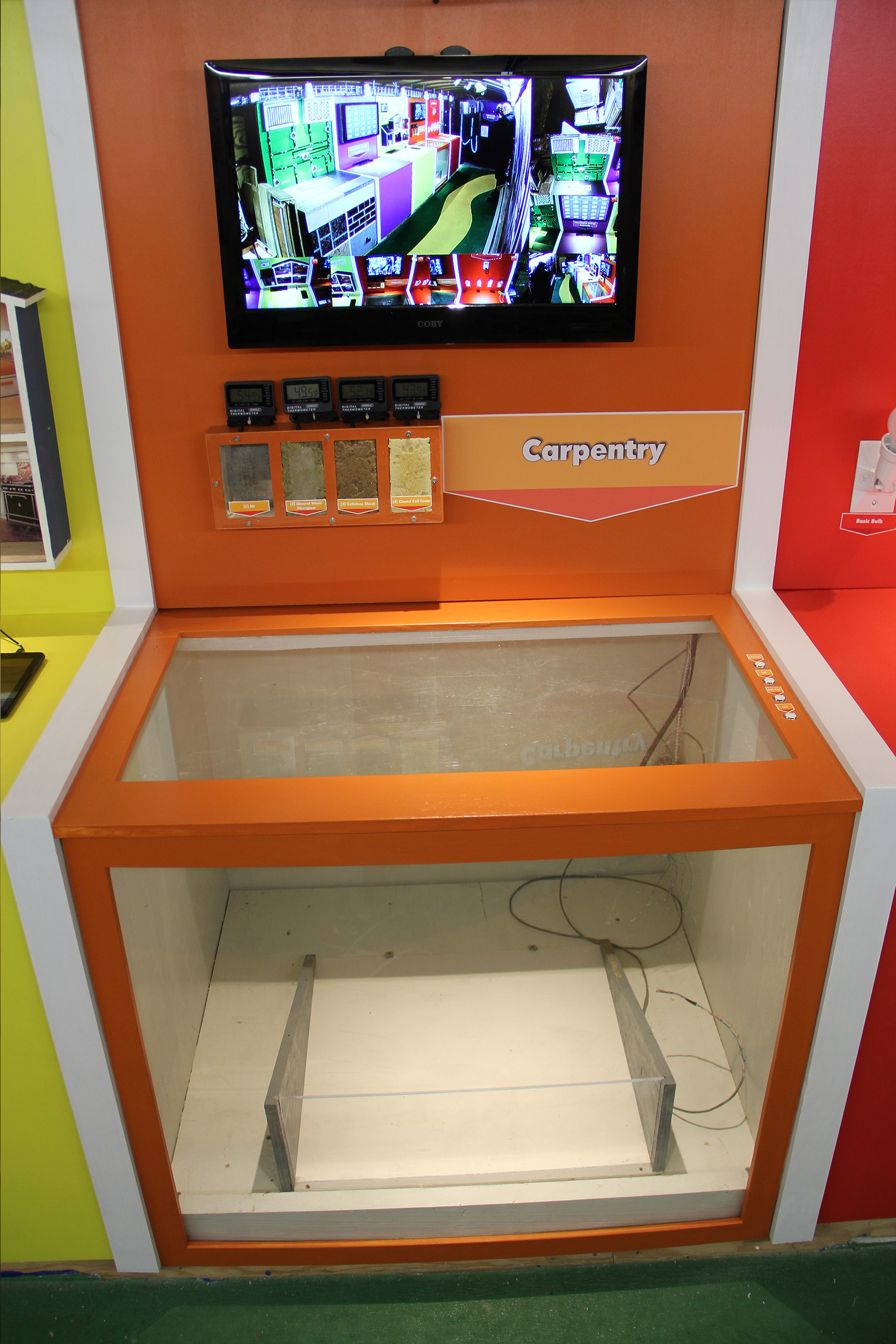-


Introduction:
Carpentry is a growing field and includes many diverse opportunities for employment. At this station students will explore the connection between home construction, green building and insulation. The station presents a practical application for the content knowledge they have learned in Middle School Science about heat transfer (conduction, convection and radiation).
Objectives:
Students will be able to
- describe how heat may be lost or gained to the environment by a home
- the properties of a good insulator
- estimate the relative r value of insulation
- distinguish between heat and temperature
- select appropriate insulation types for various applications in a home
Background Information:
Heat transfer is an important concept on the Intermediate Level Science test. Students should be aware that 3 ways that this may occur are as follows:
- Radiation - in which energy is given off by a hot object such as the sun, transmitted through an intervening medium or space, and absorbed by another object like you when you are sunbathing
- Convection - in which heat is transferred when the warmer, less dense parts of a material move, rise, or circulate. This may apply to a liquid or a gas. An example might be the main floor of your house is hotter than the basement in the summer if you don’t have air conditioning
- Conduction - is when heat transfer occurs from a warmer object to a cooler object when they are in contact, such as a warm countertop to your packet of frozen peas that is lying on it
Basically, when insulating a building you are trying to “seal the box” i.e. reduce heat loss by the 3 methods described above. The best insulators have atoms that are well separated, since it is harder to transfer energy by means of convection or conduction. An example would be “Styrofoam,” which is a type of extruded polystyrene plastic, containing tiny bubbles of gases. Gases have a low density and compared to solids and liquids widely spaced atoms. Note: Coffee cups are not actually Styrofoam, but the term is used generically. Styrofoam is crunchy and the kind of material used in pink or blue house insulation, or floral foam blocks.
Students should also begin to appreciate that there is a difference between heat which is a form of energy, and temperature. Heat can be measured in Joules or other energy units. If you heat a substance such as ice, you increase the kinetic energy of the water molecules in the ice. If enough heat energy is added, the bonds between the water molecules will start to break and change the state of matter. The solid ice will melt into liquid water. Continued heating will eventually cause the liquid water to boil and change to steam, a gas. Temperature on the other hand, is a number that is related to the average kinetic energy of the molecules of a substance.
Another function of insulation is sound proofing to reduce the transfer of sound energy between rooms. An R value of 11 is suitable for this application.
What the student will experience at this station:
Students will see a model of a rough framed house (studs visible and without sheetrock), tilted at an angle, with landscaping around it. The front and top of the display is a clear plastic called Lexan to protect the model. On the wall above, there is a display of 4 different types of insulation: air, fiberglass [batt], sprayed cellulose insulation [sheet], and sprayed closed cell foam [sheet] with their R values. The temperatures displayed will provide a visual indication of their relative efficiency. Students will also be able to interact with the display by pushing buttons to match areas in the house where each type of insulation is used. Above the station there will be a video of students engaged in various stages of construction of a house.

